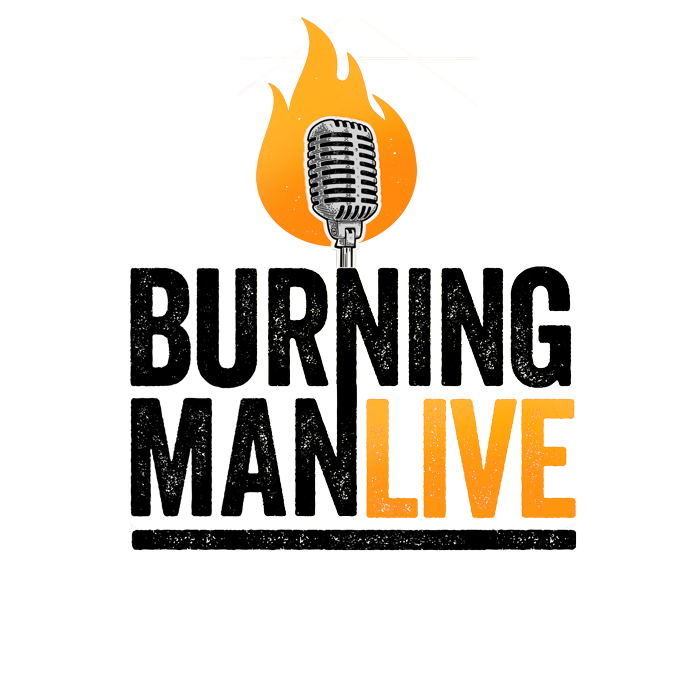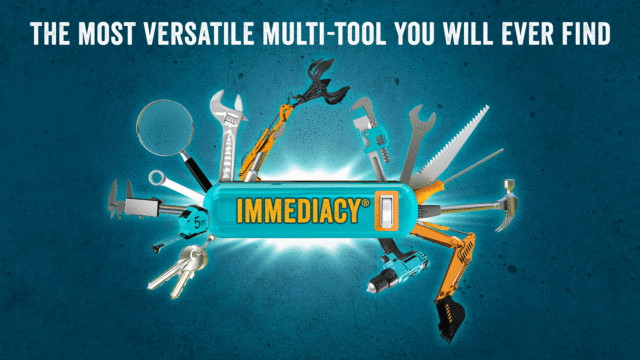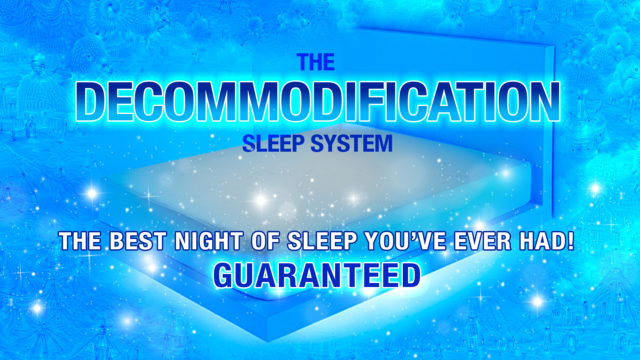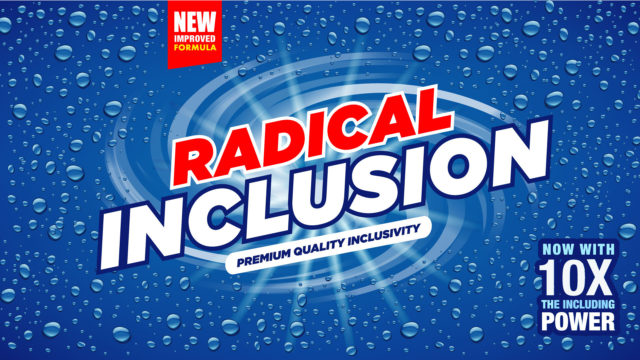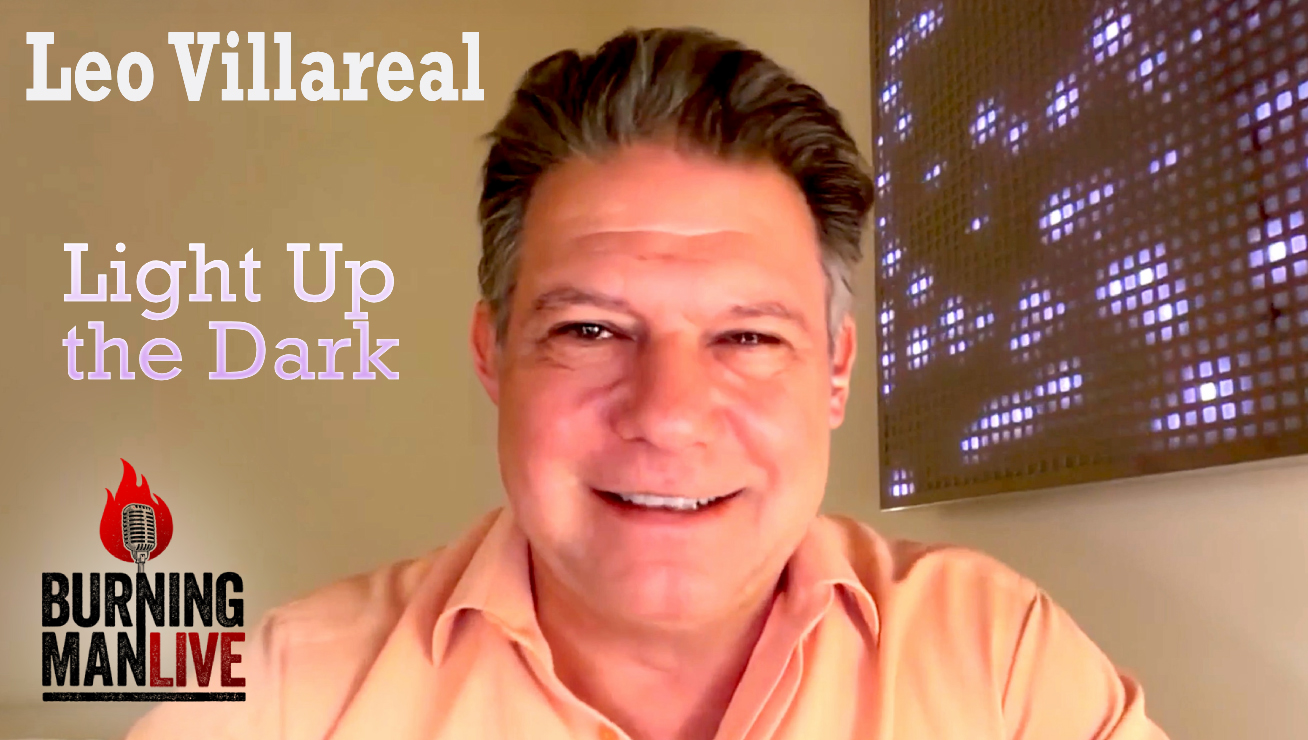
Leo Villareal – Light Up the Dark
Leo is a pioneering light artist, bringing teams and tech together to activate buildings, bridges, and bastions. He started Burning in 1994, founded Disorient camp, and is part of Black Rock City every year.
Here he shares his journey from crafting a single beacon at his tent to leading monumental art projects that reshaped skylines. He illuminated the Bay Bridge in San Francisco, the historic bridges of London, and projects everywhere from NYC to Tokyo.
Join Leo and Stuart on how the open-source innovation of BRC impacts the default world. Leo shares his process for conjuring tech, from customizing LED fixtures to coding sequences.
He describes how artists can engage with their communities outside of their comfort zones.
He tells stories of the convening power of photons as an artistic medium, as a digital campfire for all.
Hear him flip the switch, and stay until the brilliant end.
villareal.net/urban-scale-artworks
Transcript
LEO:
It’s kind of the golden age of all this stuff where we have the unbelievable tools to manipulate light and sound, and video, and map these things, and do things that have just never been possible. And there’s all these communities of people sharing information about them.
And I think of Burning Man as a giant kind of research lab and petri dish. So you get to go out and experiment with some of the people who are really ready to go. And when I’m on the playa, I feel like I’m in the future. It is the future. It’s interesting to see how it affects society at large. And there are so many things that are born at Burning Man and so many and that has started to really impact the quote unquote default world.
STUART:
Hey, everybody. It is Burning Man LIVE, again. I’m Stuart Mangrum, and, my guest today is, I have to say, a pioneering Burning Man artist whose work has gone way, way, way past the playa at this point, all around the world. Behind ginormous illumination projects that probably everyone has seen, like the Bay Lights in San Francisco, like the Illuminated River in London, and it all started out on the playa of the Black Rock Desert, a few seasons ago. Calling in from Brooklyn, New York, welcome, Leo Villareal.
LEO:
Thank you so much. I’m really honored to be here. And great to have a chance to chat.
STUART:
Cool. All right. Well, I want to start at the very beginning. I know you’ve told this origin story a lot of times, but I think most of our listeners have not heard it. But there you were in 1997, you’d been to a few Burns, and you wanted to make your tent visible at night when you were coming back from wanders.
LEO:
Well, I’d just gotten so lost in years past, in the early days. And I started going in ‘94. There were no streets, and there was only the Burning Man and a few thousand people in tents. So, it was interesting for me to be able to get lost as a 20-something year-old, and have to find my way around with this new kind of space. But I thought it also fascinating — I thought, this is amazing and so cool — to be in this new kind of space, and I decided to create a beacon for myself in ‘97. And that’s kind of where it all started for me.
STUART:
And what did you use to make that beacon? I’m thinking that the whole lighting technology that we take for granted now is still pretty primitive at that point. I think this was before Arduino controllers or any of that stuff. Right?
LEO:
Yeah, it was pretty early on. I had gone to the Interactive Telecommunications program at NYU, where I’d gotten deeply into programming and microcontrollers and all sorts of things, and this is also pre… you know, there weren’t a lot of LED light fixtures at all. So I was using strobe lights, like xenon strobes…
STUART:
Oh, wow.
LEO:
which are great because they had great visibility and punch. And I took a basic stamp microcontroller and programmed it in Basic, back at NYU in the Physical Computing lab. And I put all the strobe lights in these Tupperware containers, thinking about the dust and all the things that could possibly happen on the playa, and put the microcontroller in another Tupperware box, all these wires coming out. And this is pre 9/11, so no issues with the TSA, but nowadays this thing’d look pretty scary to transport across the country and bring out to the playa.
I got some chicken wire, and put it up on top of my motorhome and mounted these lights. And it was really a huge surprise to me, the visual impact that this had. It went way beyond just being a beacon for myself and my neighbors. And, it got me thinking about light sculpture as a form, as a way that I could connect what I’ve been studying with technology with light, which is so primal.
STUART:
Yeah. It’s hard to explain to people how dark it used to be out there at night, right? You know, in my first year – I’ve been going about as long as you have – I tell people that the only light was car headlights, fire, or that one annoying guy with the headlight who’s like shining it in your eyeballs. I think around the same time Blue Light District earned their name by putting a blue light bulb on top of a pole outside their camp for the same reason, but not nearly as interesting.
So, I want to get a little geeky about the technology here because it’s changed so much since then. I’m just curious what you know, what else you had to innovate, what else you had to learn as it came out. How does the technology change for light art?
LEO:
Well, I mean, it’s been explosive, and I’m really just grateful to the community. I mean the community at NYU Dan O’Sullivan, who pioneered this idea of physical computing, and breaking things apart, and voiding the warranty, and making them do things they weren’t intended to do, perfectly matched with the kind of culture of of making, on the playa, and and Burning Man, it always attracted sort of mad scientist types.
So I loved the generosity and the people sharing, and it wasn’t like, “Oh no, this is mine. And I’m not going to..” You know, proprietary this and that. No, it was like, “Let me jump start you ten steps and here’s how I did it, and here’s how you can do it.”
So I feel like that’s been something really wonderful. It used to be… Over time, I started getting access to LEDs, and they were very exotic, at that point. And, as things have become more and more available, it’s been fantastic.
And not only that, it’s kind of the golden age of all this stuff where we have the unbelievable tools to manipulate light and sound, and video, and map these things, and do things that have just never been possible. And there’s all these communities of people sharing information about them.
And I think of Burning Man as a giant kind of research lab and petri dish. So you get to go out and experiment with some of the people who are really ready to go. And when I’m on the playa, I feel like I’m in the future. It is the future. It’s interesting to see how it affects society at large. And there are so many things that are born at Burning Man and so many and that has started to really impact the quote unquote default world.
STUART:
Any examples you can think of off the…? I mean, I can think of a lot of more modern, recent light art that’s blown my mind. I’m thinking of, for instance, Lekha Washington’s Two Moons. Remember the fake moon that freaked everybody out? And all the stuff that Studio Drift is doing. I don’t know. Do you see other exciting, interesting, innovative type stuff happening out there still?
LEO:
Every year, I go to Burning Man to get kind of reprogramed, and I feel like I need it creatively because now I spend year round creating light sculptures in all sorts of cities around the world, and a lot of it is inspired by what I’ve learned on the playa and a lot of the principles and all of that, and bringing it out to a large audience. But I still feel like this is the kind of primary event, and it’s a place I go and I unpack what I’ve learned on the playa all year long.
And for me I like to work collaboratively when I’m there with my camp. You know, I founded a camp called Disorient in 2001. And we have about 150 campers. And it’s just like a giant family reunion where we all get to get to play and create things for one another. So, yeah, it’s really been transformative for me.
STUART:
Yeah. Let’s go back to that first trip out to the playa in 1994. Now, I know that unlike a lot of Burning Man artists, you actually did go to art school, right? You got a degree in sculpture from Yale and all that stuff. But you weren’t working as an artist necessarily at the time. You were in a think tank. Is that what I read?
LEO:
Yeah. So I was an undergrad in sculpture and… so art is first. My dad got me an Apple II+ when I was 13 years old. So, yeah, I was…
STUART:
Yes! I had one, too, I was a little bit older.
LEO:
Yeah. Early exposure. And I was doing all sorts of graphics and sound synthesis and crazy things, to be doing in the 80s. And I went to college and technology at that point was really good for, like, writing papers or something. There wasn’t really much creative you could do.
But then around 1990s, the year that Photoshop first came out and there was this buzz about Jaron Lanier, and VPL, and all these things happening with virtual reality. And I found the Interactive Telecommunications program at NYU, and I went there for two years from ‘92 to 94, and got fully immersed in all this stuff, and had access to these Silicon Graphics computers. I was doing VR way back then when it was like a whole other thing. And then I got this internship at Interval Research, which is a lab that Paul Allen had founded on Page Mill Road in Palo Alto.
So I went out in the summer of ‘94 and some friends said, “Hey we’re going to go out to the desert and burn this thing.” And I was like, “Wow. That sounds completely crazy, and YES.”
I went and bought a tent and ended up just feeling incredibly lucky to have had a chance to go when I did, and with the people I went with. And it was really, really magical.
And I guess my realization was: I was trying to do all this virtual reality stuff but it required more and more supercomputers and devices and all this. But my realization was I could do a lot with a very simple amount of light, and 16 strobe lights, and that – creating something that was very elemental and, primal, in a way; and in a way inspired by fire and these things that we were seeing on the playa, but in a way like digital fire, and it became like a digital campfire.
So I found a way to connect back to sculpture, which is my original interest as an artist, and dealing with computation, but in a way that was very impactful visually and connected back to other light art like James Turrell and Dan Flavin and some of the classic 60s and 70s light and space artists.
But this was a new way to kind of to bring people together, and that’s really what I like. My favorite thing about my work is it gathers people around and it connects people; it’s really about this communal moment that these things create. And that to me is the most exciting part.
STUART:
Yeah, it definitely has a convening power, doesn’t it? It’s nothing behind a velvet rope. Let’s talk about the first big project, the one that probably most people were aware of. The Bay Lights project. How did that get started? I want to know. I want to know some of the logistical details, too, of how you actually did that; how you raised eight million dollars, and how you got up on that bridge. I’ve been on that bridge, and it’s… Well, I got arrested on that bridge, actually, on New Year’s Eve of Y2K in a tuxedo, but that’s another story.
But I hear about how you put that project together. First of all, just tell people what it was and what it looks like.
LEO:
So this, actually, all of it, all happened pretty much at Burning Man. Ben Davis was out on the playa, and he had been working with the Bay Bridge and a lot of communications, and thinking about the bridge and how could it be activated. And Dorka Keehn, another friend on the playa, she came to a show I had, a survey show at the San Jose Museum of Art in 2010, and there was a picture of her standing in front of one of my pieces, and Ben Davis asked, “What is that thing behind you and where are you?” And she said, “Oh, it’s a light sculpture. And Leo has this show at the San Jose Museum.”
And so one thing led to another, and Dorca said, “You know, there’s this crazy idea. What would you do with the Bay Bridge as a canvas, if you could make something?”
And I thought, wow, that’s an amazing idea, and this probably will never happen. But I spent a few months working in Photoshop and 3D and SketchUp and making an animation, a one minute animation, that I produced. And I said, “Well, this is what I would do.”
I sent it off, and Ben started showing it to people at Caltrans and the Bay Area Toll Authority, and they got very excited. And they’re not known as an artist friendly organization. But they were super excited and they said, “Well, maybe we can get a permit to do this,” and it was a completely crazy idea. And one thing led to another of, “Well, how would we do it?” and, “Oh, we need to form a nonprofit, and we need to figure out how much it’s going to cost,” and all the technical hurdles. We had no idea how hard it would be.
And I think, it’s very much aligned with a lot of the spirit of Silicon Valley and kind of innovative thinking in the West Coast of these crazy ideas.
So it ended up being about two and a half years from initial idea to completion, and we turned it on in 2013, which is pretty much lightning speed when you think about projects of this scale, because it’s 1.8 miles long, 525 feet tall, and we put 25,000 lights on the suspender cables of the bridge using zip ties, miraculously. I mean, I was shocked that that’s what you know, that’s the solution that came back, uh, but that’s how we did it.
STUART:
Good ol’ zip ties!
LEO:
Yeah. And all the work had to be done from 10 p.m. to 5 a.m. because we couldn’t obstruct traffic. There’s no access on the Bay Bridge. So we had to put out the cones and the police cars and the whole thing. And, I mean, it was a really, crazy and wild project.
But we finally were able to launch it in 2013, and there was much excitement and jubilation and on a very stormy night on the Embarcadero, waves crashing everywhere. And the people were out there partying and out on boats, and it was just like – we kind of brought the energy of the playa to San Francisco. So anyway, it was very well received and it kind of became part of the fabric of the city.
STUART:
How had the technology changed? Was it easier or harder to… Did you still have to come up with a lot of MacGyver solutions to make it work?
LEO:
Yes, every time. We had a two year permit, so it opened in ‘13, and then it came down and there was kind of a, there was an uproar and people said this has to come back. So we put it back up again. And every time we’ve done it, we’ve innovated with our partners and the technology and made them more robust and more waterproof, and…
Last year was ten years that the piece had been up. And we started to have more technical failures, and so we decided we needed to do something about it. We had to shut it down. And now we’ve raised another 11 million dollars. And we have a whole new product that we’ve designed, and that’s going in sometime this fall. So the Bay Lights will be back up and running, hopefully by the end of the year and it will be up; it’s warrantied for ten years.
So it’s very exciting that people love this artwork and it’s really not about me and not about my ego; It’s more about like, here’s something that is a gift to the city and to everyone. And you don’t have to buy a ticket. You don’t have to go, you know… And anyone can look at it and have a response. And that to me is the magic.
You know, I love overhearing people on the Embarcadero who don’t even know each other, and they’re just looking at this thing, and it provokes such a sense of wonder and awe that they can’t help but talk to one another. And I’m like, yes, this is what it’s about. So, I personally find that very, very satisfying.
STUART:
So I’m still curious about the installation crew. I’m picturing you guys up there and with the maintenance crew with all your…how does that work? How do you get up on those cables?
LEO:
Well, I’ve done a few daytime cable walks. No nighttime. And it’s quite exciting to get up there. And they give you a harness and it has a little shock absorber and they say it has the absorber in case you do fall, you won’t break your spine. So I’m like, “Okay, good to know.”
And you get in a van and with some Caltrans workers and go to a certain spot and there’s kind of a janky Home Depot ladder that sort of lashed on. And you’re looking down and it’s 500 feet to the water and it requires some… you know, you have to kind of get it together. You go up to the second level and then you start walking up the tube, which is probably about two or three feet in diameter, and you have a little cable on either side, but that’s it. There’s not a lot up there. And you’re always hooked in with one of the clips.
And I was fine in general until Ben started talking about the earthquake of this year and the earthquake of that year, and I’m like, okay, I can do this, but to imagine the entire thing start to move, pushed me a little over the edge.
But it gave me a lot of admiration for the crews that we had doing this installation for months out there in whatever weather and hanging a fragile piece of electronics in the middle of the night. And it was really a labor of love.
But I think the thing that made me happiest is that our workers felt a sense of participation. It was communal effort. And they came and brought their families to see the work that they had done, which, I mean, most of these people are installing lights on the side of a highway. They’re never going to come show their family that, but this was something really magical, and they really said, “I helped to make this.” So I think that really got things going.
And, the Bay Lights has served as an example for many other cities that want to do these monumental public art projects on this huge scale. And that led to Illuminated River in London, which was an international competition. And again, that was to activate, we ended up with nine bridges over the Thames. So it was really out of the seeds of the Bay Lights led to this, yet another project.
STUART:
Yeah, twice as long, more or less?
LEO:
Well, it’s different because none of the bridges are quite the scale of the Bay Bridge. Nothing’s 1.8 miles long, but they’re very historic bridges like Westminster Bridge, and Waterloo, and Black Friers, and London Bridge. And each is different in terms of the time that it was created and its functionality. And some are very humble kind of industrial rail bridges. And some are iconic, like Unesco World Heritage sites like Westminster.
So we had to do a lot of studying of the history, figure out how light could be used to kind of bring the bridges to life. It was a different challenge and having nine completely separate structures, but trying to create a cohesive artwork that, they all had a certain language and, although they were different, there’s a sense of connection and synchronization between them.
STUART:
Yeah, that’s got to be interesting. You know, we think about architectural preservation over all that period of time, right? And all those different styles. So you adapted to each bridge based on its architectural style? Is that what I heard?
LEO:
When we could speak to the living architects, we did. So we spoke to Norman Foster’s office, who did the Millennium Bridge, and Alex Lifshitz, who did the Golden Jubilee footbridges. So we were able to work with them, or look at historic photographs of Westminster, where we saw that there had been light underneath the bridge that had ceased to function. So we were able to bring that back. Or study how things had been done for the Olympics in a temporary way, to do it in a way that was made to stand the test of time for a ten year project.
And I think one of the things I’m most proud of is that we were able to replace a lot of this existing lighting with much lower-consuming LED fixtures. So we were able to reduce energy consumption, and also direct light where it should be, so we were putting light into the sky, so reducing light pollution, and also into the water. There was a lot of ecological concern with the bats and the eels and a lot of groups asking questions. And so we were able to work with the community to create something that was very sensitive. I guess my goal was to reveal the beauty that was already there, but then add this element of time and motion, through the sequencing of the light.
STUART:
So what are you working on now?
LEO:
Well, I’m about to launch a big project in Davenport, Iowa, at the Figge Museum of Art, which is a beautiful building right on the Mississippi, and it was designed by an architect named David Chipperfield. So we’ve installed, over a mile of, of light, around this building, and it’s just this luminous, amazing object. So I’m launching that in mid-May. We’ve been working on that for over ten years.
So that’s been really exciting, and exciting to go and work in the unlikely places in the middle of the country, and working on a show for my gallery in Tokyo, which will open in September. So we’re quite busy. We’re working on a new book, 330 page book, with Monacelli Press. It tells the story, and I think that’s very aligned with Burning Man, you want to tell the story of how you got here and how this all happened. And, so that continues to unfold in yet another form.
And really, I guess our goal is to kind of create the inverse wave and try to neutralize a lot of the stuff happening in the world, and respond with love and a sense of belonging and inclusion, and all the things that these elemental artworks bring out; and really bring people together because I think it’s more important than ever right now.
STUART:
Yeah, I was going to ask you about your work with, Burning Man Project. You’ve been a board member for quite a while here. Does that pretty much sum up why you think it’s important to do that work? Tell me more.
LEO:
Well, I was incredibly honored to join the board. And we had a long relationship with many of the Founders, and it’s one of the most incredible things in my life, that’s transformed my path, and anything I could do to help contribute to the organization, I’m so happy to do.
And, I guess one of my biggest interests is inspiring young people, to get involved with art or technology or both. And I think this mission of bringing what we’ve learned through the Ten Principles out into the world, and that there are thousands of events happening that are inspired by Burning Man is amazing.
And the culture is portable from what I’ve found. So we can recreate this in lots of different places, and I think there’s a very deep need for people to connect with creativity and to be making things across the board. So I feel very much aligned with it and I think kind of getting that out into the world is sort of the mission, at least for me, through public art. You know, doing these piece artworks that tens of millions of people will see and it can really impact things, is exciting.
But I think it’s also, it’s not just about making pieces, it’s about telling the story; how did that happen? How can others do it? Giving people access and opening it up, because I think it’s about more and more people doing more things for one another. And these are really gifts that we can give to one another. And, that’s getting a lot easier.
I think that certainly the Burning Man Project is helping and funding tremendous amounts of art on the playa, inspiring people who haven’t had access to this culture and opening things up. And everyone’s bringing that back. And it just continues to flourish. And I see it as this flowering garden or something that keeps evolving. And this is a really beautiful part of it.
STUART:
So are there any young artists in your Disorient community, for instance, that you’re helping along, working with?
LEO:
We’re constantly learning and transferring knowledge, and as a camp that’s been around for as long as we have, we’ve learned a lot, and I think we have a lot of our sort of elders, and people have been there since the beginning, teaching people to be good campers and be good citizens, and how do you do it.
I think that’s really exciting to have lots of new energy. And we’ve spawned, I don’t know how many camps, but many, many camps, started at Disorient, which we’re very proud of and happy to see people go and flourish and to be part of that journey. But I think the openness of it and the roles and the way that we work together is so special, and so different than what we see in the day to day world. I think it is critical to help people to learn and pass these things on and whatever way we can.
STUART:
And to keep learning. You know, I had a talk with Kevin Kelly the other day. He said that with technology unfolding the way it does, we’re all beginners all the time, right? If you think you’ve mastered something, you’re fooling yourself, right? So what are you learning these days, or what are you exploring?
LEO:
I’m very lucky. I have a studio, my studio in Brooklyn, we have eight people working with me, full time. And I have 3D artists and programmers and designers, and we’re I feel like I have the best team in the world. I’m very, very lucky. And a lot of the people that work with me I met at Burning Man. So it’s a great place to… it’s a great trial. And if they can handle the playa, they’re pretty robust. So yeah, it’s a very special group.
We’re inventing new things constantly. For over 20 years, we’ve been designing our own custom software that I used to sequence light, and I exceeded my own abilities pretty quickly, coding-wise. But I’ve had good creative coders that have good bedside manner and can help me make the things that I want to make that I then use to make my work. So we’re also simultaneously making our own LED fixtures or control systems, or this or that, and it feels like… it’s just there’s so much to do and it’s all wide open.
And suddenly we have 3D printers and laser cutters and all these kinds of things that we can make. That’s what is exciting for me is that feeling of having my own little research lab that I can develop the work that I’m doing, and then have a way to kind of share that with people. So it’s in a way, mirroring a lot of what I learned way back when and recreating that.
STUART:
So I read one review that called you an LED Rothko. How do you feel about that?
LEO:
Art is first. That’s one thing that I often caution people about is that the technology is so dazzling, it’s very easy for it to kind of take you on this trip and suddenly you’re making something that isn’t… you kind of lost yourself in the dazzle and the seduction of the technology.
So I think keeping it in check. And I would be, I’m humbled to be described in that way and I think a lot about art and I was really inspired by a lot of other artists, and I’m always thinking, well, how do I… What is a Rothko algorithmically? And I made several pieces inspired by that idea.
It’s different from Rothko because he was using pigment, but I’m using photons and I’m also dealing with time. So it’s a Rothko over time, and …but trying to understand the rules of a Rothko, like, what is it like? What are the rules? And I’ve applied that thinking to a lot of other artists, and it’s been quite interesting. And thinking about the future as like so many new things happening with generative art, and purely code based works, and things that continue to evolve. It feels like projection has gotten… the quality of the projection is amazing. And we feel like things are really hitting their stride and in a wonderful way that will allow for a lot to happen.
So I’m personally very excited and optimistic, and I hope that more and more people will be inspired to create more, and to get out there and cities and activate.
And there’s a lot of things that need activation. And oftentimes I’m asked to think about a connecting link between the East and West buildings or the National Gallery in Washington, DC, for instance. It was very dark and, what would I do? And there we put in 41,000 LEDs. And through that transformation, it took that space and it really just completely altered it. So I think that’s the magic, and the possibility that we have is to take this default world and find ways of activating it through these kinds of simple gestures.
And instead of trying to recreate everything from the ground up, we can take a lot of what already exists, and through these just slight little moves, we can make unbelievable things happen. So I hope that many more will join me on that mission.
STUART:
Well, there’s certainly so much more now than there was when, when all this started out, right? And so many affiliated sort of spin out things. You mentioned projection mapping, but also drones, lots of ways of putting light in places that were dark before, are pretty exciting.
You know, I also see a little bit of an affinity to, I don’t know if you agree with this, but to Christo in the way that you take large public spaces and completely transform them.
LEO:
Absolutely. And Christo wrote me a very nice letter of support for the Bay Lights, which I appreciated because here he was the master of these monumental public art projects, and The Gates in Central Park. And even though our work is quite different, he saw the value of it and extended himself. And I think that’s always motivated me, like: What can I do for other artists and how can I help in the way he helped me? So that’s really important.
And we made a documentary about the Bay Lights called Impossible Light, which is available, and if people want to know the nitty gritty of how it happened, it’s every – all the behind the scenes, and I think that’s important to break it down. And, I think the other part of this is the idea of patronage, and being able to connect with people who want to enable ideas and, in a way, that the art world is going through a lot of disruption right now, and there are whole new ways of working, which I think certainly Burning Man has pioneered a whole new system, and I think there’s a real momentum to all of this, so I think we’re in an exciting moment.
STUART:
I do agree that’s super exciting. I did an AI search on light art, and I came up with Thomas Kinkade, so I’m not going to compare you with a painter of light. That would definitely not be flattering.
So Burning Man is still a part of your life. You’ve been every year since you started going. Obviously it must mean a lot to you. What does it mean, to you personally or to the world?
LEO:
Well, I see it as an incredibly… it’s the intimacy, the connection, the ability to really try things out and the newness of it, I think I I would always come back from Burning Man very – and get upset that the streets were where they were and everything was sort of static, and everyone in New York is wearing their funeral garb and it’s just lik: This sucks! We need to change this!
Once you get in that mindset of you can, everything is there because someone brought it, or made it, then it’s kind of mind blowing. And you see the scale at which that’s happening. And the way it’s just this represents this beacon and this other which is so important for me and to get – I mean, I love what I do, I’m very lucky to do what I do. But the playa is a place that feeds me on that very deep soul level, and that’s what makes it magical for me.
STUART:
So as an elder, and you used the term yourself, so I have to borrow it, from one elder to another: Do you have any advice to give to young artists or would be artists coming out, and maybe a little bit nervous about if they can do that project or not?
LEO:
I would say, get out of your comfort zone, reach out to the community, don’t be shy, ask for help.
And I think many people I know when a young person wants to come into a project in our camp, I’ll be like, okay, let’s talk about this, and let’s just talk about all the different constraints and the difficulties, and the wind, and all this kind of stuff. So let’s optimize it before you even get there. So I think that’s one really great thing to do.
And people are so excited to help. That’s one thing I know with tremendous certainty is, there’s a huge community that wants you to be successful and wants to help you. So reach out, listen, and also try something new.
And it’s okay if it… Be okay with failure. You tried something and you’ll learn something, and then my favorite thing at Burning Man is hearing people say, “And next year dot dot dot.”
STUART:
Me too!
LEO:
Then you’ve got that cycle going and, and that’s what keeps me going because I’m always like, “Next year….” And so it’s this ongoing beautiful thing that I’m very lucky to be part of.
STUART:
Those are two beautiful words. I love that, too. Somewhere around the middle of event week, I start overhearing it in people’s conversations. “Next year I want to dot dot dot”, right? Or how about, “I need to learn to weld so I could…” something like that, or whatever. Those are the overheard conversations that really make me smile every time I go back.
So at this point, it’s easy to get jaded, but there’s always something surprising and new, right?
LEO:
Yeah. It is. And also just not being too pigeonholed of like, “Oh, I’m a sculptor, I’m a painter, I’m a photographer.” Whatever you are, you know what? Just be an artist. Don’t worry about it too much, and just do it. It’s all these things of second guessing. You really have to just suspend all that and sort of put on blinders and just go, and really, I think that that’s the exciting part.
It is a little daunting as a young person who’s never done this before, but, gather some people around because it’s a lot funner to do when you’re sharing it.
STUART:
Amen. Why do we do this crazy thing? You tell me.
LEO:
Because we have to. At this point, it’s not optional.
STUART:
All right. Thank you Leo Villareal. It’s very good to have you on the program. Appreciate you, man.
LEO:
It’s my pleasure. I’m thrilled, and, yeah, really happy to be able to connect with more people and tell the story, so thank you very much for the opportunity.
STUART:
All right. See you out there in the dust.
LEO:
Bye-bye.
STUART:
Hey, Vav. Anything we should add here, at this point?
VAV:
I got nothing but gratitude for you, Leo, for you, Stuart, and for Burning Man LIVE, a production of Philosophical Center, one of the focus areas of the non-profit Burning Man Project.
It’s a labor of love. However, love does not keep the lights on, so please consider donating a comfortable amount — a penny, a dollar, a twenty, a hundo.
Money’s not inert. It’s dormant energy. Money can be invested, shifting from a state of potential energy (stored value) to kinetic energy for action.
Energize some money at donate.burningman.org.
Thanks to Leo Villareal and everyone who lit up the Bay Bridge, the bridges over the River Thames and other public projects, and teams that helped Leo light up private projects.
Thanks to Burning Man LIVE’s team: Allie, Andie, DJ Toil, kbot, Martin, Stuart, Vav-Michael-Vav (that’s me), and, thanks Larry.
more

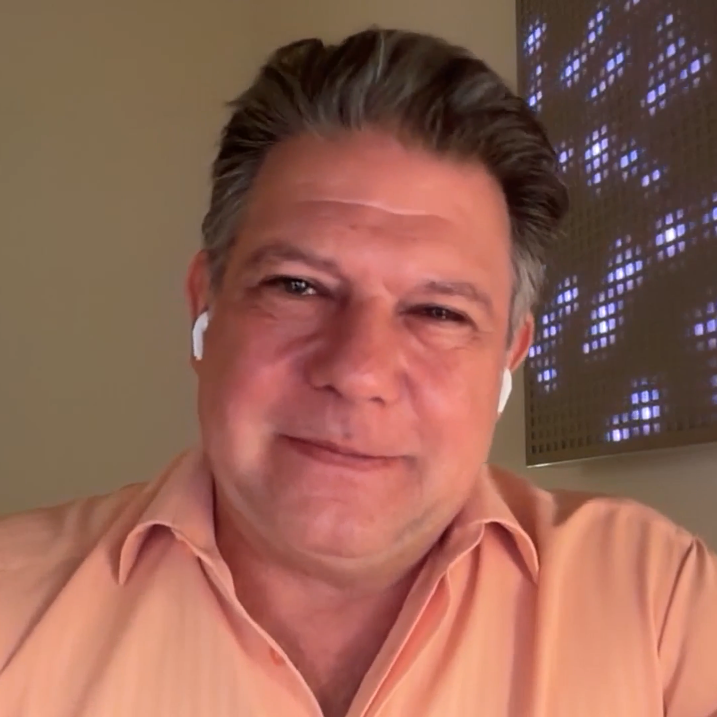 Leo Villareal
Leo Villareal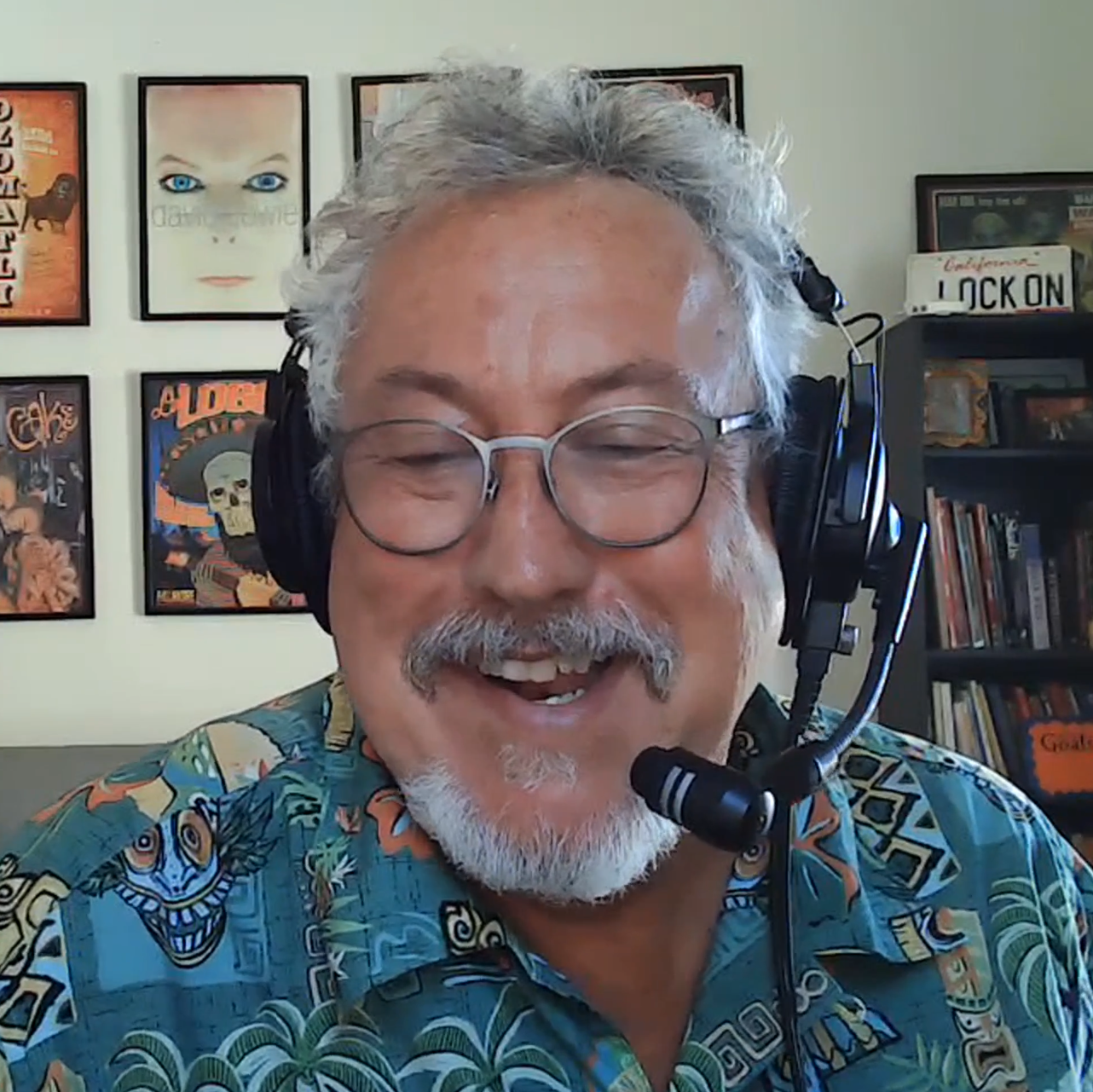 Stuart Mangrum
Stuart Mangrum
